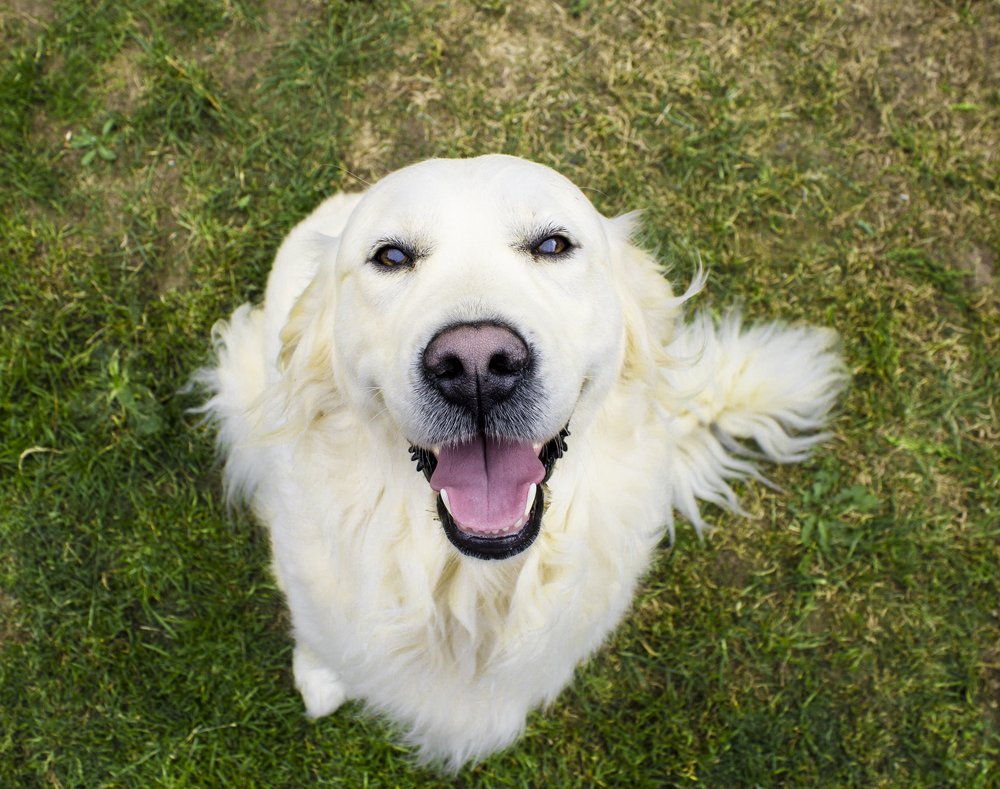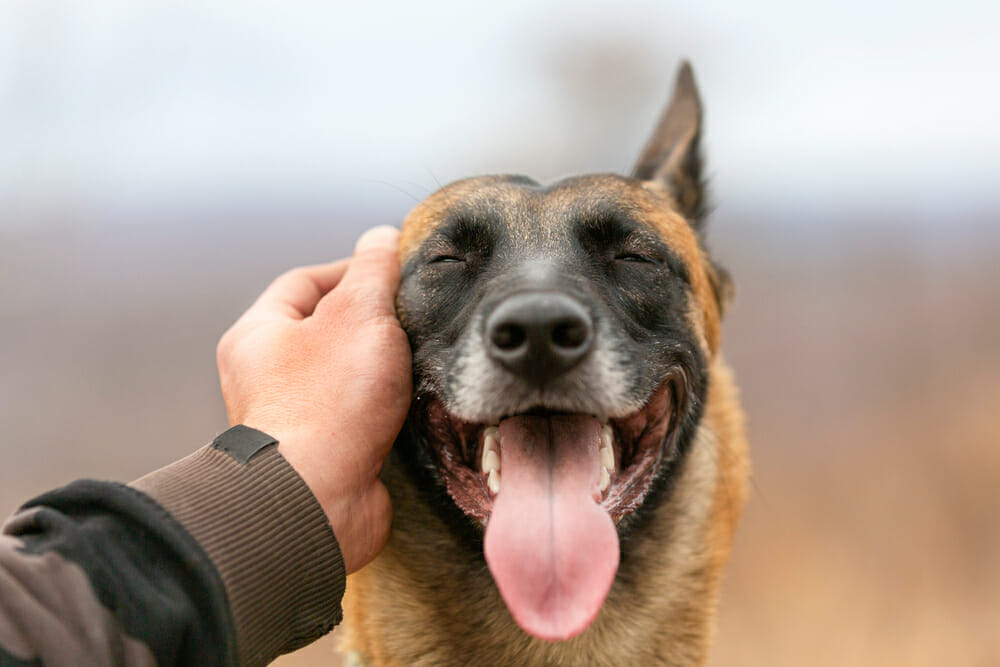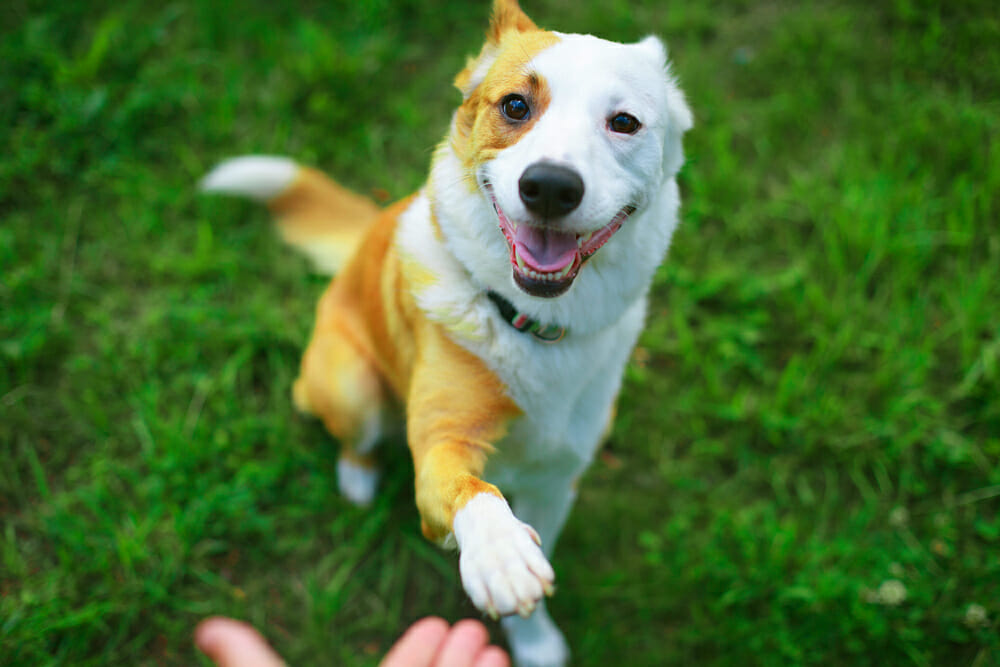“Positive Reinforcement” has recently become a buzz word in the world of dog training. With an overwhelming amount of dog training pedagogies out there, you may be having a difficult time determining what training method is the best fit for you and your dog. Read this guide to understand why so many people are talking about positive reinforcement-based training and what makes it so great!
Positive reinforcement training is a science-based approach to dog training that eliminates the use of aversive equipment and pain-inducing tactics in the training of animals. Instead, it uses positive reinforcement almost exclusively to modify behavior. Positive reinforcement training puts a larger emphasis on the observation of the body language of dogs and examines the reason behind a dog’s behavior, working to fix the underlying behavioral issue, rather than the symptoms. Recent scientific studies support a positive reinforcement based training philosophy and confirm that pain-causing methods have significant negative side-effects including damage to our relationships with our dogs, and have a very real potential to elicit aggression from the dog when used.
So, let’s take a deeper look into the positives that come from positive reinforcement training!
Science-Based Pedagogy
Before a publication in 1959, of The Principles of Humane Experimental Technique by W.M.S. Russell and R.L. Burch, (Charles Thomas, 1959), scientists used to consider pain in animals, including dogs, as a philosophical debate, rather than a scientific one. We now know that all animals experience pain, much like we do. Studies eventually discovered that animals and dogs also had the ability to create and utilize tools in their environment and proved that they feel emotions, too. It’s miraculous that we need scientific studies to prove that animals have emotions. Could you ever possibly believe, when staring into the eyes of your furry companion, that they don’t feel any emotions?! Of course, they do.

As with most things, science surrounding the intellectual and emotional capabilities of animals and dogs has had to adjust their findings with time, evolution, and the rise of technology. Old-school aversive training methods using pain-inducing tactics would’ve made complete sense in a world where we were told by experts that animals don’t feel pain. Now, we know better.
Scientific studies, surrounding dog training and behavior modification overwhelmingly prove that positive reinforcement is significantly more effective and successful in changing behavior than aversive and pain-inducing tactics. And it makes sense! Think about your own behavior, at work for instance, are you more motivated to improve your work when your boss yells at you for doing something wrong? Or is it more motivating when your boss gives you praise for something you did right?
Pain-Free!
Positive reinforcement training is pain-free for your pup! Other training methods that are not purely positive reinforcement based either objectively cause pain to dogs with equipment and tactics that introduce stimuli that are aversive to the dog, or at least cause discomfort to your pet. Why bother with methods that may be unpleasant to your dog when there is a scientifically-proven way to train your dog without causing pain or discomfort?
Affects the Underlying Cause of Behavior
Often, the behavior we’re experiencing from our pups that we’d like to change is the symptom of an underlying cause, usually fear-related. Dogs that are barking incessantly at sounds outside of your home, or lunging and growling at other dogs you pass on the street, are probably doing so because they are afraid of the thing they’re barking at or lunging towards. Positive reinforcement based training seeks to discover and modify the underlying cause of that behavior, not just suppress the behavior itself. It uses management to avoid situations where your dog can exhibit unwanted behavior. That way, when your dog encounters something that triggers an unwanted behavior, food will be used to change their association with whatever they’re sensitive to. By changing the underlying fear or concern that your dog is experiencing, and giving them a positive association with the thing they were afraid of, the negative behavior will naturally go away with time.
Builds Confidence

Because the underlying cause is what is being worked on by positive reinforcement training, you end up with comfortable and confident pups whose needs are met and who have positive associations with the world around them, and therefore don’t need to act out. Positive reinforcement training doesn’t just aim to stop the behavior, it seeks to ensure the pup has an incredible quality of life and happy and healthy relationships to the people and things they come into contact with.
Strengthens Your Bond
So you can change the unwanted behavior in your dog and they’ll love you even more for it? Sign me up! Positive reinforcement is all about creating positive associations. When you’re raining treats on your pup to help them out in tough situations, they’re bound to think of you as a magical treat wizard! You’ll also, naturally, end up creating new ways of communicating with your dog, through food and play and other positive things that your dog loves, which will strengthen their trust in you and, ultimately, your bond!
IT WORKS!
Just ask us, two dog moms with sensitive and reactive pups. Through consistent positive reinforcement training, we’ve nearly eliminated behaviors like excessive barking and lunging at people and other dogs, just by feeding our pups the treats and the love they need! Well… there’s more to it than that, but you get the picture!
Putting It Into Practice
Now you know how positive reinforcement training can help you change your dog’s behavior and strengthen your relationship with them at the same time. Your next steps are to identify the unwanted behavior in your pup, and find a positive reinforcement dog trainer near you who can help you properly train your dog and modify that behavior through positive methods. Now go play with your dog and give them some love (and yummy treats)! They’ll adore you for it!
Are you currently training a new puppy? Send us any questions you have for the experts (and puppy photos are welcome too, of course!) to whatthepup@spotandtango.com.




















